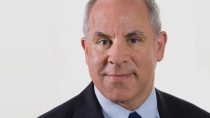Abuses in Programs for Struggling Teens: The Legacy of Scandal
Most programs and schools for struggling teens are run professionally and are reputable. Sadly, however, some are not. Parents who are eager to find programs and schools for their teens should be aware that some have been notoriously abusive and unethical.
Until recently, programs and schools for struggling teens operated with scant scrutiny by government agencies. Anecdotes about shoddy and abusive practices remained just that—anecdotes—until around 2003, when several prominent media outlets publicized crises associated with the World Wide Association of Specialty Programs and Schools (WWASPS). WWASPS was an umbrella organization of interconnected limited liability corporations, programs that provide residential services to struggling teens. The New York Times cast considerable light on the brewing controversy, exposing abuses at a WWASPS-affiliated school, the Academy at Dundee Ranch in Costa Rico.[1]
The Alliance for the Safe, Therapeutic, and Appropriate Use of Residential Treatment (ASTART),[2] established under the auspices of the University of South Florida and the Bazelon Center for Mental Health Law,[3] has provided valuable scrutiny of abusive programs. ASTART began operation in 2004 to address growing concern about abusive residential programs for struggling teens. According to the organization,
A concern about a growing number of reports from youth, families and the public media regarding the exploitation, mistreatment, and abuse of youth in unregulated, private residential treatment programs has given rise to an alliance of individuals and organizations that are working together to address this problem.
Over the past decade in the United States, hundreds of private residential treatment facilities for youth have been established, described as a $1 billion to $1.2 billion industry that serves 10,000 to 14,000 children and adolescents. This increase in residential programs is alarming because research has established that community-based treatment and support is effective and indicated for most youth and families, even those with serious problems who need intensive support.
Some residential programs self-identify as “therapeutic boarding schools,” “emotional growth academies” or “behavior modification facilities,” and market to families of youth with psychiatric diagnoses, claiming expertise in treating a variety of serious conditions. Many of these new programs are not currently subject to any state licensing or monitoring as mental health facilities. Currently, the only information available about most of these programs comes from their own marketing efforts and there is no systematic, independently collected descriptive or outcome data on these programs. Highly disturbing reports have been published in the public media and provided by youth and families describing financial opportunism by program operators, poor quality education, harsh discipline, inappropriate seclusion and restraint, substandard psychotherapeutic interventions conducted by unqualified staff, medical and nutritional neglect, and rights violations in a number of unregulated facilities. Multiple state investigations have been conducted and lawsuits have been filed in response to reports of abuse, neglect and mistreatment of youth in unregulated residential programs. In numerous cases the lawsuits have led to convictions or high cost settlements. In many states there are limited to nonexistent regulations and there is a lack of federal legislation supporting oversight of private residential treatment programs.
After surveying the wide array of residential programs for struggling teens throughout the United States, ASTART concluded that many programs are negligent and abusive, using a severe and rigid approach to discipline and activities of daily living. For example, some programs do not allow teens to have contact with their parents both initially—sometimes for months—and subsequently when youth do not comply with rules. Programs may use youths to monitor and discipline their peers, a particularly questionable practice since all youth sent to the program presumably have special challenges themselves and certainly lack professional training and credentialing for working with struggling teens.
ASTART further reports that therapy within these programs is often provided by staff members who have not received formal clinical training; ASTART documents troubling descriptions of interventions suggestive of gross incompetence. Psychiatrists are not routinely included as treatment team members; dosing errors, as well as inappropriate medication or overmedication of youth, have been reported. ASTART concludes that this substandard treatment is especially troubling because programs often quite explicitly direct their marketing efforts to families of youth with psychiatric diagnoses and often claim expertise in treating a variety of mental or behavioral health challenges.
A second major effort to expose abusive programs led to the 2006 publication of Help at Any Cost: How the Troubled-Teen Industry Cons Parents and Hurts Kids, a scathing critique by Maia Szalavitz, a freelance journalist and former television news producer. In Help At Any Cost Szalavitz explores the modus operandi of many schools and programs for struggling teens that use a “tough love” approach, programs that “share the belief that difficult teens are always acting deliberately, even those who have been diagnosed with mental illnesses—and that through harsh confrontation and deprivation of privileges, they can be broken and resocialized to better conform with parental and societal expectations” (p. 5). Szalavitz closely examines “tough love” schools and programs—a subset of a much broader group of schools and programs—and reaches a hard-hitting conclusion: “What all this boils down to is that tough love programs are sold on false premises, exaggerating both the risks to untreated teens and the benefits of residential treatment” (p. 12).
[1] Tim Weiner, “Costa Rica Intervenes at Troubled U.S.-Owned Academy,” New York Times, May 23, 2003. http://www.nytimes.com/2003/05/23/world/costa-rica-intervenes-at-trouble…
[2] Alliance for the Safe, Therapeutic, and Appropriate Use of Residential Treatment (ASTART), University of South Florida. http://astart.fmhi.usf.edu/
[3] Bazelon Center for Mental Health Law. http://www.bazelon.org/

Frederic Reamer Ph.D. Bio
Dr. Reamer is a professor in the Graduate Social Work Program at Rhode Island College.
Learn More